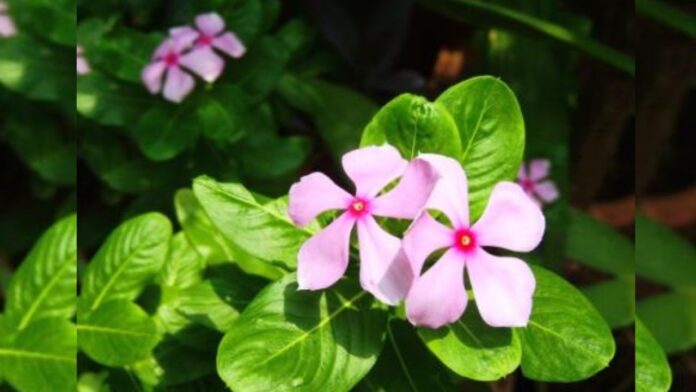Sadabahar, scientifically identified as Catharanthus roseus, is a flowering plant with a rich history in traditional medicine, especially in India, and is also known as periwinkle or vinca. While its visually appealing flowers are captivating, it is the plant’s medicinal qualities, particularly in the realm of diabetes management, that have drawn considerable attention.
In traditional Ayurveda, Sadabahar is believed to contain compounds with potential benefits for diabetes. A noteworthy advantage is its capacity to stimulate insulin production, a crucial factor in managing diabetes effectively. To comprehend its role in diabetes management, a closer examination of Sadabahar’s biochemical components is essential. The plant houses alkaloids, such as vincamine and vinblastine, which exhibit hypoglycemic properties, actively lowering blood glucose levels and enhancing insulin sensitivity.
The alkaloids in Sadabahar play a role in regenerating beta cells in the pancreas, responsible for insulin secretion. This regeneration could potentially amplify the body’s ability to produce and regulate insulin. Addressing oxidative stress, a concern for diabetics leading to complications like cardiovascular disease and neuropathy, Sadabahar’s antioxidant properties come into play, neutralizing harmful free radicals and reducing the risk of associated complications. Moreover, its anti-inflammatory effects may alleviate chronic inflammation linked to diabetes.
Additionally, Sadabahar may positively impact lipid profiles in diabetic patients. Given the correlation between diabetes and elevated cholesterol levels, the presence of omega-3 fatty acids in Sadabahar, particularly in periwinkle (T. fuscatus), can contribute to improved lipid profiles and better cardiovascular health for individuals with diabetes.
Preparing Sadabahar for consumption involves drying and powdering its leaves, which can then be stored in an airtight container. A daily intake of one teaspoon of this powder with fresh fruit juice or water is recommended. Boiling the flowers of the Sadabahar plant in a cup of water, straining, and consuming the resulting infusion every morning on an empty stomach is another suggested method.
While Sadabahar presents potential benefits, consulting with a healthcare professional is crucial before incorporating it into one’s routine. Determining the appropriate dosage and form of administration, be it tea, extracts, or supplements, should be guided by a qualified healthcare provider to ensure both safety and effectiveness.

 हिंदी
हिंदी






